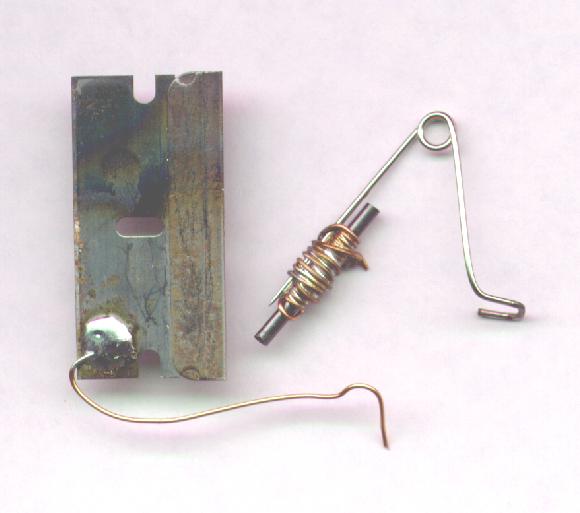
During World War I, soldiers in the field made their own radios to listen to programs for entertainment and news. They had access to wire from broken down vehicles, and telephone receivers, but they did not have modern solid state diodes in little glass tubes.
However, it is surprising to find out just how many ordinary objects can act as a diode, letting current flow one way better than another.
The soldiers found that an old rusty razor blade and a pencil lead worked just fine. By lightly touching the pencil lead to spots of blue on the blade, or to spots of rust, they formed what is called a point contact diode.
We can replace our store-bought diode with a homemade point contact diode and compare the results. The parts can be attached to the circuit with clip leads, or they can be soldered, as in the photo below. The pencil lead is attached to a safety pin by wrapping it with bare copper wire and soldering it.

The safety pin acts as a spring to lightly press the pencil lead onto the razor. If the pressure is too hard or not hard enough, the diode will not work, so experiment. The exact spot on the razor is also critical, since some spots will have too much or too little oxide on them to make the diode. Move the pencil lead around on the razor until the sound is loudest, or the meter (if you have attached one) reads highest.

Other then that-OLYMPIC HOCKEY SOON!!!!!!!!!!!!!!!!!
VIEW 6 of 6 COMMENTS
I think it looks like...
Canada
Sweden
Russia
Maybe FInland and the U.S. with an outside shot at the bronze.